- About us
- Support the Gallery
- Venue hire
- Publications
- Research library
- Organisation chart
- Employment
- Contact us
- Make a booking
- Onsite programs
- Online programs
- School visit information
- Learning resources
- Little Darlings
- Professional learning
David Chalmers (b.1966), philosopher, excelled at mathematics at the University of Adelaide in the 1980s and developed a fascination with consciousness and the mind. Consciousness can be described as the sense of awareness, through mental images and thoughts, of being in the world. Presently Distinguished Professor of Philosophy and Director of the Centre for Consciousness at the Australian National University, Chalmers is interested in determining fundamental principles that connect physical processes to consciousness. His books define current debates on the subject. In his work Chalmers demonstrates attentiveness to the important role played by our individual subjective experience of the world. He maintains an abiding interest in neuroscience and the psychology of consciousness.
The delicate nature of Chalmers's ideas and the clarity of his writing suggested to artist Nick Mourtzakis the necessity of creating a portrait that captures the non-physical quality of thought.
Commissioned 2011
© Nick Mourtzakis
This 2011 portrait of David Chalmers is by Nick Mourtzakis. It is oil on canvas and measures 185 centimetres by 122 centimetres.
The philosopher David Chalmers studies consciousness. The artist was inspired to create a portrait that captures this non-physical, abstract quality of thought.
The portrait depicts David’s head and neck, large in the middle of the picture, constructed from a myriad of densely overlapping and intersecting straight light and dark blue lines on a plain white background.
David’s facial features, articulated within this geometric haze, have a greater intensity of colour and form than other areas of the head that seem to disappear and dissolve. The eyebrows are tilted inward as though in concentration, the eyes are heavily lidded, the nose slightly upturned. The closed mouth turns up on the left side. All of this is drawn with sketchy, sharp blue lines.
A thin vertical strip, a gap, runs the length of the head dividing it in two.
Near both the bottom and the top of the painting are thin grey horizontal lines going from the left to the right of the image. Beyond these there are no blue lines, only the white background.
Audio description written by Marina Neilson and ready by Carolyn Eccles
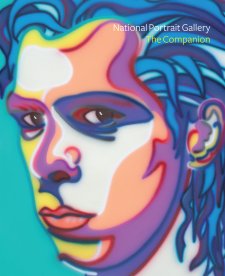
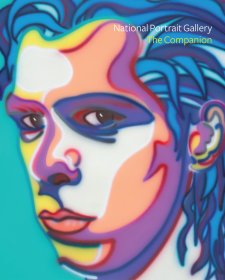

On one level The Companion talks about the most famous and frontline Australians, but on another it tells us about ourselves.
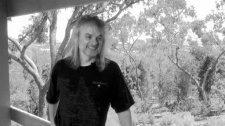
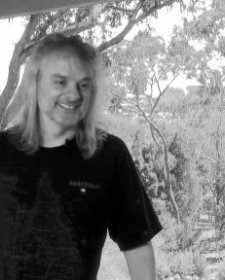
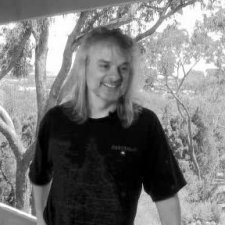
Professor David Chalmers explains his interest in philosophy and introduces some of his theories on the conscious mind.
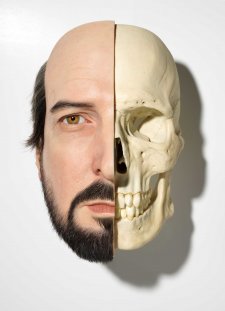

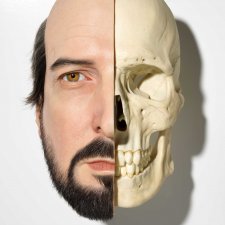
This display sets two impressive portraits from the collection into direct dialogue: Sam Jinks’ sculptural self portrait and Nick Mourtzakis’ painted portrait of David Chalmers, along with related maquette and sketches.Together they explore physical and psychological manifestations of the strata of self-hood.